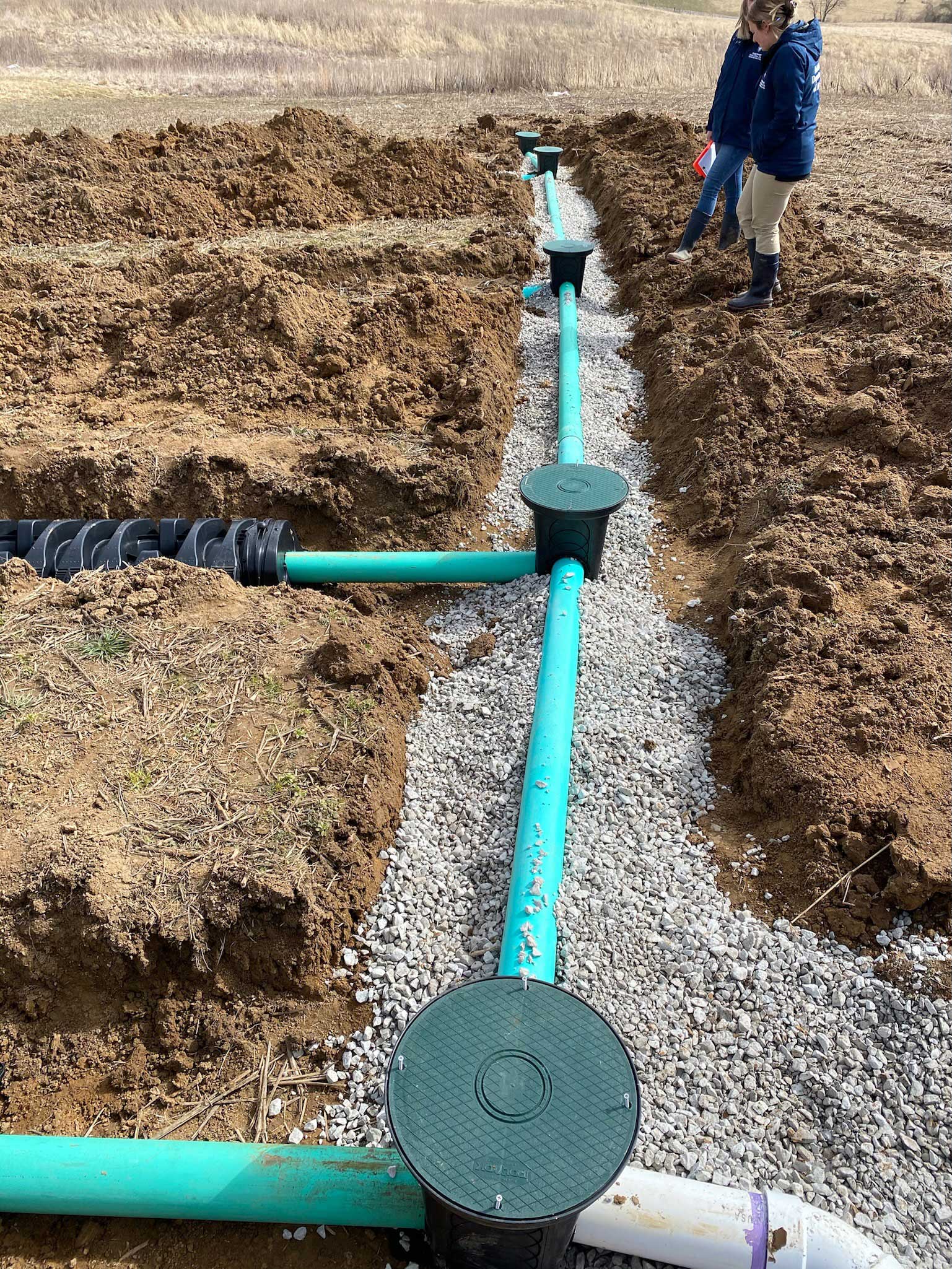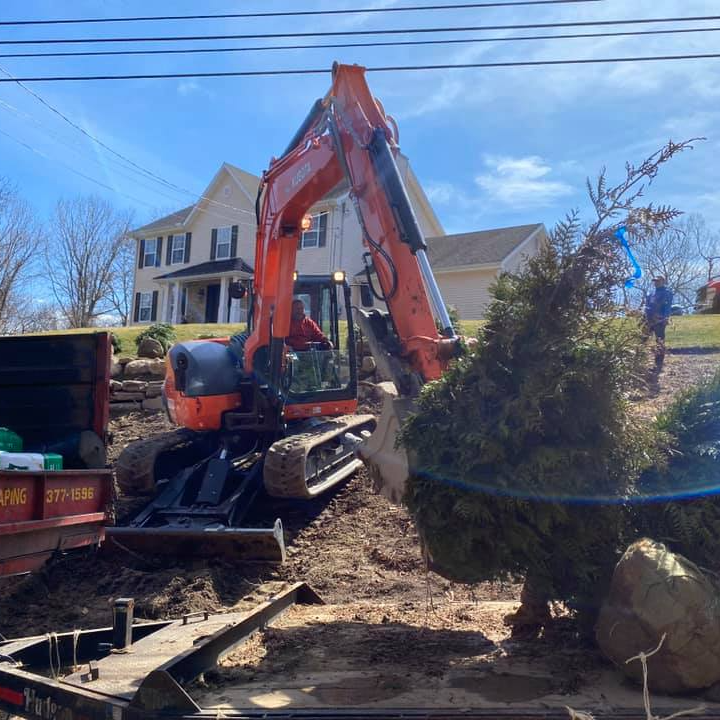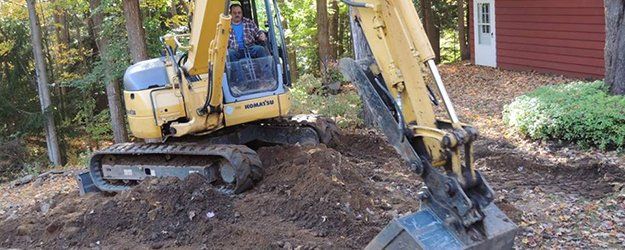Budget-friendly Lancaster Excavation - Top Quality Excavation at Competitive Costs
Budget-friendly Lancaster Excavation - Top Quality Excavation at Competitive Costs
Blog Article
Revealing the Art of Excavation: Pro Tips for Safe and Efficient Digging
As dirt is transformed and planet is relocated, the complexities of excavation reveal themselves, demanding an eager understanding of devices, soil make-up, safety and security protocols, and ecological factors to consider. The knowledge required to browse these aspects successfully can indicate the distinction in between an effective excavation task and a possible disaster.
Relevance of Appropriate Equipment
To make sure the security and performance of any type of excavation job, using the suitable equipment is extremely important. The right tools not just improve productivity yet likewise mitigate threats connected with excavating. Excavation jobs differ in extent and intricacy, varying from small residential landscaping work to large-scale building and construction endeavors. No matter of the project dimension, having the proper devices can make a significant difference in the end result.
Excavators are fundamental pieces of machinery in any excavating operation. These versatile machines been available in various sizes to match different job requirements. Tiny excavators are suitable for smaller tasks, while larger excavators deal with a lot more considerable projects successfully. Backhoes are another important equipment type, integrating the features of a loader and an excavator in one maker. They are beneficial for tasks requiring flexibility and ability to move.
Aside from excavators, various other important equipment includes dump bulldozers, vehicles, and trenchers. Dump trucks are vital for removing and carrying excavated products, while plates are utilized for digging deep and narrow trenches. Bulldozers master jobs that require pushing huge amounts of dirt or particles. By purchasing the ideal equipment, excavation jobs can be completed safely, on schedule, and with accuracy.
Recognizing Soil Make-up
An extensive grasp of dirt structure is essential for carrying out excavation jobs with precision and safety and security. Understanding the various types of dirt is important as it straight affects excavation methods, equipment option, and total project effectiveness.
Sand particles are the largest and provide good drain but use little cohesion. Silt particles are smaller sized than sand but bigger than clay, supplying moderate drainage and communication. Clay particles are the tiniest and provide high cohesion however inadequate water drainage. Organic matter, such as decomposing plant material, influences soil fertility and stability.
Before beginning excavation, conducting dirt examinations to establish its structure and attributes is necessary. This info aids in picking the proper devices, applying safety measures, and establishing excavation methods customized to the certain dirt problems - septic ohio. By recognizing dirt structure, excavation experts can boost project results while ensuring safety and adherence to finest practices
Security Steps and Protocols
Understanding soil make-up is the foundation upon which security measures and procedures for excavation projects are built, making sure the wellness of employees and the success of the endeavor. When it involves safety during excavation, there are numerous key procedures that need to be applied to reduce risks and prevent crashes.
Most importantly, prior to any kind of digging starts, a complete inspection of the website must be carried out to recognize any type of prospective dangers such as underground utilities, unstable soil problems, or nearby structures that might position a risk. It is critical to have a competent individual oversee the excavation procedure to make sure that all security procedures are followed purely.
Additionally, all workers involved in the excavation has to be effectively educated in safe digging methods and read more the proper operation of equipment. By adhering to these safety procedures and methods, excavation tasks can be finished efficiently and without occurrence.
Effective Excavation Preparation
When beginning on an excavation project, thorough preparation is vital to guarantee performance, safety, and effective results. Effective excavation planning includes numerous key steps that are vital for the smooth execution of the task. The initial step is to carry out a comprehensive site analysis to identify any prospective hazards, such as underground utilities or unpredictable dirt conditions. This details is vital for developing a detailed excavation strategy that includes precaution and take the chance of mitigation strategies.
As soon as the website analysis Check Out Your URL is total, the next action is to create a clear timeline and schedule for the excavation tasks. This includes establishing the series of jobs, devices demands, and manpower appropriation. Appropriate organizing aids stay clear of delays and makes sure that the job stays on track.

Furthermore, interaction amongst all staff member is critical throughout the planning stage. Clear instructions, routine updates, and reliable control are important for an effective excavation task. By investing time and initiative in careful preparation, excavation groups can significantly enhance efficiency, minimize risks, and accomplish successful results.

Managing Environmental Considerations
With boosting emphasis on environmental sustainability in construction techniques, handling environmental considerations has actually ended up being an important aspect of excavation projects. Excavation tasks have the possible to affect the surrounding environment with soil erosion, sediment runoff, environment interruption, and contamination of water resources. To reduce these dangers, it is important to carry out ideal techniques that focus on ecological defense.

Additionally, proper waste monitoring is crucial to protect against dirt and water contamination. Executing treatments for the disposal of hazardous products, recycling of waste products, and reducing using harmful chemicals can dramatically reduce the ecological influence of excavation jobs. By integrating these practices into excavation planning and execution, building and construction companies can make sure that their jobs are not just risk-free and productive however likewise environmentally liable.
Conclusion
To conclude, mastering the art of excavation calls for a thorough understanding of proper tools, dirt composition, security steps, and efficient preparation. By complying with these standards and thinking about ecological variables, excavations can be performed securely and efficiently. It is crucial to focus on safety and view it now security and productivity in every digging task to make sure effective end results.
As dirt is turned and earth is relocated, the intricacies of excavation expose themselves, requiring a keen understanding of tools, soil make-up, security protocols, and ecological factors to consider.To make certain the safety and security and efficiency of any type of excavation job, making use of the suitable equipment is extremely important.An extensive understanding of dirt structure is fundamental for executing excavation jobs with precision and security. Recognizing the different kinds of soil is essential as it straight impacts excavation approaches, devices selection, and total task effectiveness. By recognizing dirt structure, excavation experts can improve job end results while making certain safety and security and adherence to ideal techniques.
Report this page